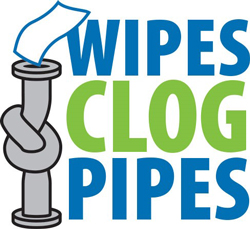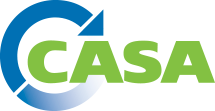Lawmakers Introduce PFAS Legislation
A group of House lawmakers, led by Representatives Debbie Dingell (D-MI) and Fred Upton (R-MI), have introduced the PFAS Action Act of 2021 (H.R. XXXX). The bill, which is a reintroduction of a bill (H.R. 535) Dingell sponsored last year, aims to address the public health and environmental risks posed by PFAS contamination, including addressing, monitoring, and treating for PFAS contamination in water supplies. Like last year’s version of the bill, the legislation again includes the directive for the U.S. Environmental Protection Agency (USEPA) to designate PFOA and PFOS as hazardous substances under CERCLA, also known as Superfund law, within one year after enactment of the bill and within five years determine whether to designate all PFAS substances as hazardous under CERCLA. To address contamination in water supplies the bill also includes:
- Directives for USEPA to review and determine whether to establish effluent and pretreatment standards for PFAS substances under the Clean Water Act and provide grants assistance to publicly owned treatment works for implementation of developed standards. The grants program would be authorized at $200 million for each of the fiscal years 2022 through 2026. Individual awarded grants are not to exceed $100 thousand.
- Establishment of a national primary drinking water regulation standard for PFOA and PFOS within two years that protects public health, including the health of vulnerable subpopulations.
- Establishment of a PFAS infrastructure grants program for affected community water systems authorized at $125 million for each of the fiscal years 2022-2023 and $100 million for each fiscal year 2024-2026.
- Requirement that EPA place discharge limits on industrial releases of PFAS and provides $200 million annually for wastewater treatment.
In her press release, Dingell stated that “The PFAS Action Act is a sweeping and comprehensive legislative package which has strong bipartisan support to address the PFAS crisis in the United States… Setting drinking water standards and designating PFAS as hazardous substances under the EPA’s Superfund program will accelerate the clean-up process in communities and at military facilities all across this nation.”
Biden Unveils Expansive Infrastructure Plan
 At the end of last month, President Biden unveiled his infrastructure investment plan, The American Jobs Plan, that proposes $2 trillion to revamp and modernize the nation’s infrastructure and address climate change and environmental justice concerns. The plan delivers on an early policy directive from the Administration to provide 40% of overall federal assistance to projects that benefit the climate and support clean investments to disadvantaged communities (DACs). The plan recognizes that the nation’s water infrastructure systems have surpassed planned operational lifecycles and provides a variety of investment measures to upgrade and modernize water systems. Specifically, it calls for $56 billion in grants and low-cost loans to States, Tribes, territories, $10 billion to monitor and remediate PFAS contamination in drinking water and investing in small rural water systems.
At the end of last month, President Biden unveiled his infrastructure investment plan, The American Jobs Plan, that proposes $2 trillion to revamp and modernize the nation’s infrastructure and address climate change and environmental justice concerns. The plan delivers on an early policy directive from the Administration to provide 40% of overall federal assistance to projects that benefit the climate and support clean investments to disadvantaged communities (DACs). The plan recognizes that the nation’s water infrastructure systems have surpassed planned operational lifecycles and provides a variety of investment measures to upgrade and modernize water systems. Specifically, it calls for $56 billion in grants and low-cost loans to States, Tribes, territories, $10 billion to monitor and remediate PFAS contamination in drinking water and investing in small rural water systems.
Congressional Democrats have stated the desire to pass this massive infrastructure investment package by this summer and will use Biden’s plan as a guide. Reaction to the American Jobs Plan has received a mixed reception on Capitol Hill, with Democrats in support and Republicans opposing the plan, saying it goes beyond the traditional understanding of “infrastructure.”
Comprehensive Recycling Package Introduced in Congress, Including Wipes Labeling Requirements
 Senator Jeff Merkley (D-OR) and Representative Alan Lowenthal (D-CA) introduced the Break Free From Plastic Pollution Act (BFFPPA) (H.R. 2238). This comprehensive package addresses reducing plastic pollution and the environmental and public health threats, as well as preventing future plastic pollution. While the focus of the bill is on traditional recycling, there are three provisions addressing plastic pollution in the clean water sector.
Senator Jeff Merkley (D-OR) and Representative Alan Lowenthal (D-CA) introduced the Break Free From Plastic Pollution Act (BFFPPA) (H.R. 2238). This comprehensive package addresses reducing plastic pollution and the environmental and public health threats, as well as preventing future plastic pollution. While the focus of the bill is on traditional recycling, there are three provisions addressing plastic pollution in the clean water sector.
Specifically, an expanded section on establishing a “Do Not Flush” labeling requirement for non-flushable single-use wet wipes. The labeling section complements legislation CASA has worked to advance at the State level and would direct the U.S. Environmental Protection Agency (USEPA) to establish regulations to require covered manufacturers, as defined by the bill, to print clear and visible “Do Not Flush” labeling notice on product packaging. Eligible labeling protocol mirrors the protocols outlined in the state bill. As with the state bill, the “Do Not Flush” symbol is defined by the INDA and EDANA Guidelines for Assessing the Flushability of Disposable Nonwoven Products (Edition 4; May 2018).
The Act also includes two provisions that address pollution caused by microfibers from textiles and general microplastics through the water waste stream. The bill establishes a new grants program to support projects that reduce microfiber pollution through either improving industry and manufacturing best practices to reduce the generation of textile-based microfiber pollution or improve the filtration technology for textile-based microfiber pollution in washing machines and at wastewater treatment plants. It also creates a separate USEPA pilot program to study the efficacy and cost-effectiveness of tools, technologies, and techniques used to remove and prevent the release of microplastics into the environment. Under the program, studies will be conducted to test natural and green infrastructure, and mechanical removal systems and filtration technologies. The bill identifies eligible locations to carry out testing studies to include wastewater treatment facilities, stormwater systems, and drinking water systems.




 @CASA_CleanWater
@CASA_CleanWater